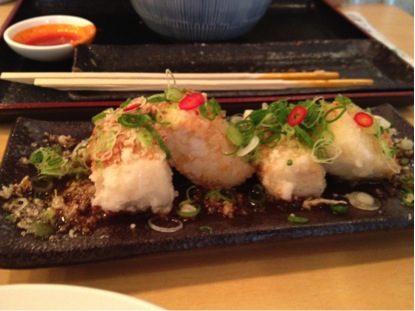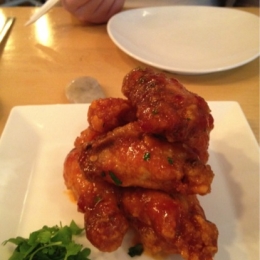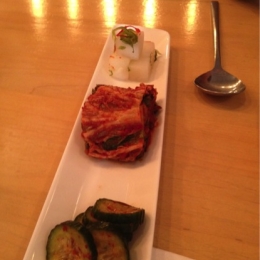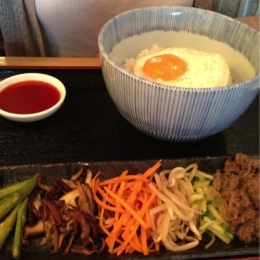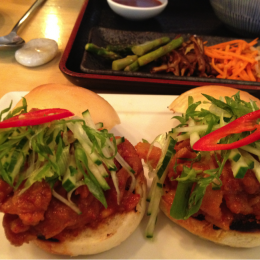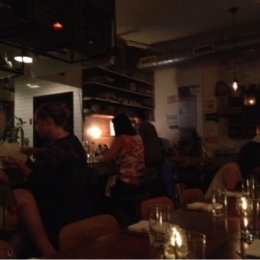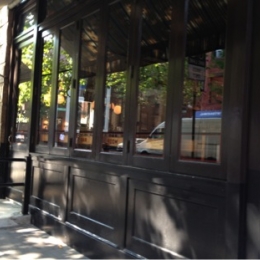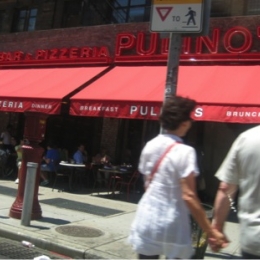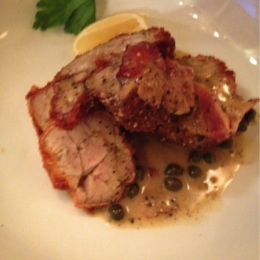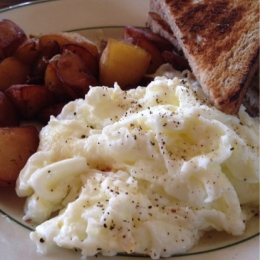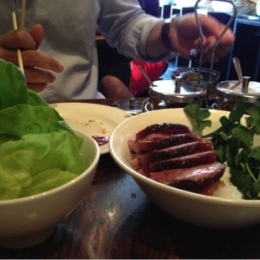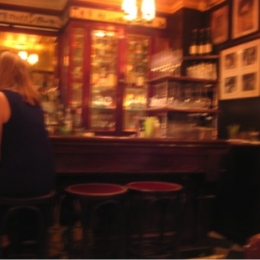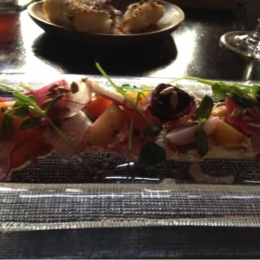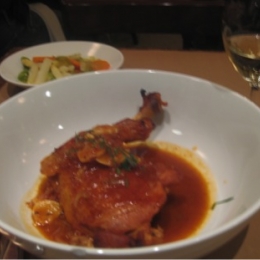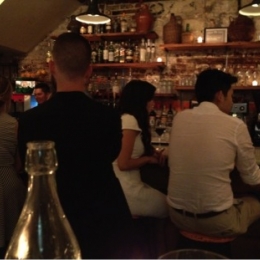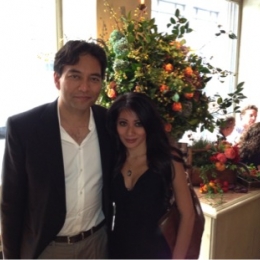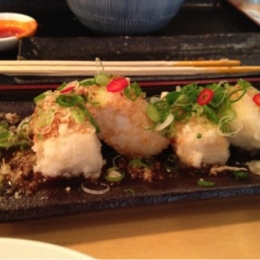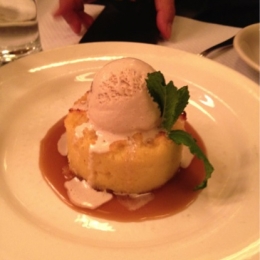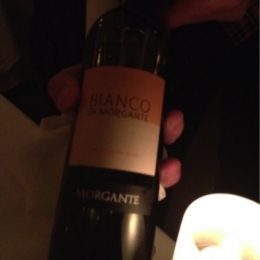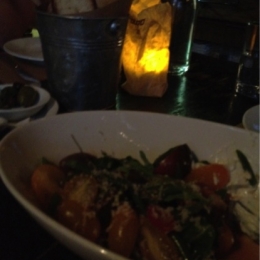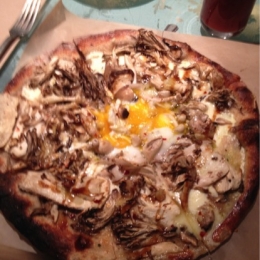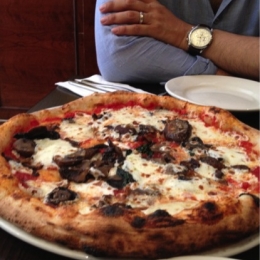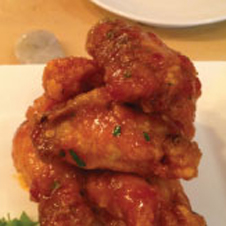What is there not to love about this new, tiny, Korean small plate supremo, when everything about the global culinary scene these days is about small plates, tiny spaces and everything Korean (tacos-on-wheels, bulgogi burgers, kimchi with everything).
Sometime during our week in NY, my daughter and I learned that Danji, which means clay pot, had scored a resounding 26 on a recent Zagat survey. Added to that, it’s slap bang in the middle of Koreatown, it’s no res, it all seems like a gamble, so of course we have to go.
Arriving at the skintight, 36-seater exactly at noon, we chose one end of a high communal dining table and ordered drinks (a glass of soju for me, tea for my daughter.) The place is like Ikea’s version of a Japanese izakaya, all blond wood and whitewashed brick and anticipation of a swiftly swelling crowd. Our waiter was friendly. She told us to slide our menu out of the drawer just below the surface of our table and graze.
So graze we did. The menu was divided into ‘traditional’ and ‘modern’--presumably to aid the less initiated in making informed choices. Raised in Jakarta with a steady diet of Korean food—and a good one, I might add—I get the point: I know my japchae (vermicelli with beef and peppers) and my gochu pajeon (scallion pancakes), my galbi jjim (braised short ribs) and my yook hwe (steak tartare with egg yolk, enlivened with slivers of Asian pear) and they are as much staples of the cuisine as ‘red devil’ eggs and crispy calamari with wasabi mayo are not. But none of those galbi jjim of yesteryear came with toasted pine nuts and cipollini, and none of those yook hwe came with quail yolk. Whether or not the last two qualify as old or new, who’s to judge? And does it matter, in the end?
As for the other matter, no less important: should we or should we not have some of them sliders? Hell yes, my daughter said, bright-eyed, I loveeee sliders.
So we did what most hungry people spoiled for choices usually do, which is order a bit of everything. The elegant old timers: the trio of kimchi, the steak tartare and the spicy whelk salad with buckwheat noodles, AND the hipster hits: the bulgogi beef sliders, the spicy pork belly sliders, the garlic honey wings with sesame, and the tofu with ginger scallion dressing.
The trio of kimchi featured Napa cabbage, ponytail radish and cucumber, and were somehow unremarkable, if slightly insipid, but the spicy whelk salad, paired with a pile of buckwheat noodle, is rather inspired. There are vivid but far from overpowering elements of ginger, garlic and lemongrass in the mirepoix used to poach the whelks with, and a similar tender calibration in the gochujang (hot chilli paste) dressing. The soba noodles, too, are beautifully glazed with honey, soy and the same hot sauce, and tempered with watercress, red onions and chives.
Yet the stars of the meal, along with the divine steak tartare, turned out to be the items from the ‘modern’ menu: those wicked sliders, in other words, and the impossibly refined tofu with ginger-scallion dressing. Coated in potato starch then flash fried, the tofu rectangles are spiked with bits of fried tempura batter along with hot pepper, ginger and scallion. The starch further softens over the tofu, not unlike curdled milk, and the effect—both creamy and chewy—recalls the consistency of mochi. Don’t get me started on the dressing (so beautiful yet subtle it makes you cry.)
As for the pork belly slider, what can I say other than whither David Chang? Every part of the gochujang-smothered, caramelized richness of the pork against the soft butter-grilled buns is only a deeper, richer, sweeter version of its bulgogi counterpart, itself a lesson in lush eloquence that marries beautiful cuts of beef with cucumber kimchi, julienned scallions and Sriracha mayo.
